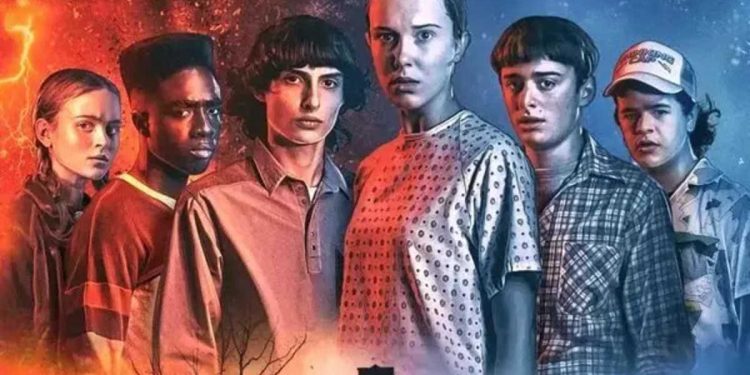In the realm of contemporary entertainment, the distinctions between television shows and movies are increasingly blurring, thanks to the advent of streaming platforms and the evolution of content production and consumption. A quintessential example of this phenomenon is “Stranger Things,” a series produced by Netflix, which has captivated audiences worldwide with its blend of 1980s nostalgia, supernatural elements, and compelling storytelling. This article seeks to explore the classification of “Stranger Things,” examining whether it aligns more closely with traditional TV shows or cinematic productions, and the implications of such a classification on its narrative structure, viewer engagement, and cultural impact.
Understanding The Distinctions: TV Show Vs. Movie
To adequately address whether “Stranger Things” is a TV show or a movie, it is essential to first establish the fundamental differences between these two media formats. Historically, movies are self-contained stories with durations typically ranging from 90 minutes to three hours, intended for theatrical release. They are designed to offer a complete narrative experience within a single sitting. In contrast, television shows consist of multiple episodes organized into seasons, allowing for more extended story arcs, character development, and detailed world-building.
Structural Differences
Movies are often structured to achieve a rapid narrative escalation, climax, and resolution, maintaining the viewer’s attention through a continuous, uninterrupted screening. TV shows, on the other hand, are episodic, with each episode contributing a piece of the larger narrative puzzle. This format inherently allows for cliffhangers, multi-episode story arcs, and complex character development that can evolve over seasons.
Production Values And Aesthetics
While movies typically have higher production budgets per minute of content, allowing for more lavish sets, special effects, and higher-caliber star casts, TV shows have started to close this gap. High-budget TV series like “Game of Thrones” or “The Mandalorian” showcase cinematic qualities in television, demonstrating that the production values of TV can rival those of movies.
Viewer Engagement And Format Consumption
The mode of consumption also differentiates TV shows from movies. Movies are traditionally viewed in theaters, creating a communal viewing experience, while TV shows are watched in more personal settings, like homes, increasingly on-demand via streaming services. This difference influences the narrative style and pacing of the content.
“Stranger Things”: TV Show or Movie?
“Stranger Things,” created by the Duffer Brothers, debuted on Netflix in 2016 and has since released multiple seasons. Each season comprises several episodes, each roughly around an hour long, following the format of a typical TV series.
Episodic Nature And Narrative Structure
The structure of “Stranger Things” adheres to the episodic format typical of TV shows. Each season explores a central mystery or threat, with episodes contributing to this overarching narrative. The series utilizes cliffhangers at the end of episodes, a hallmark of television storytelling designed to keep viewers engaged over an extended period, fostering anticipation for future episodes.
Character Development And Longitudinal Storytelling
One of the strengths of “Stranger Things” is its deep and evolving character development, which is made possible by its multi-season episodic format. Characters such as Eleven, Mike, Dustin, and others grow and change in ways that are often not feasible in the limited timeframe of a movie. This gradual development enriches the viewer’s connection to the characters and enhances the storytelling depth.
Production Quality And Cinematic Elements
Despite being a TV show, “Stranger Things” boasts high production values that are characteristic of films. The 1980s setting is meticulously recreated with great attention to detail in terms of set design, costumes, and music, contributing to a cinematic feel that permeates the series. The visual effects and sound design also meet high standards, further blurring the lines between TV and film.
Cultural Impact And Reception
The impact of “Stranger Things” extends beyond typical TV show parameters, influencing fashion, music, and even language, much like a blockbuster movie might. Its release by Netflix in full-season batches also allows for “binge-watching,” similar to consuming a long movie, which has become a popular mode of consumption for digital audiences.
Conclusion
While “Stranger Things” incorporates elements traditionally associated with both television shows and movies, it is, at its core, a TV show. This classification is supported by its episodic format, season-based structure, and character-driven, long-term storytelling approach. However, the series also showcases how modern TV shows can adopt cinematic techniques and production values, reflecting a hybridization of media formats that challenges traditional categorizations.
The evolution of “Stranger Things” from a TV series to a cultural phenomenon underscores the transformative potential of television as a medium, capable of delivering complex narratives and rich viewer experiences that are both engaging and immersive.
The analysis of “Stranger Things” as a case study exemplifies the ongoing shifts in the entertainment industry, where the lines between TV shows and movies continue to blur, creating a new landscape for creators and audiences alike. This hybridization suggests an exciting future for storytelling, where the strengths of both formats can be combined to produce content that is rich, varied, and profoundly impactful.
Related topics:

























